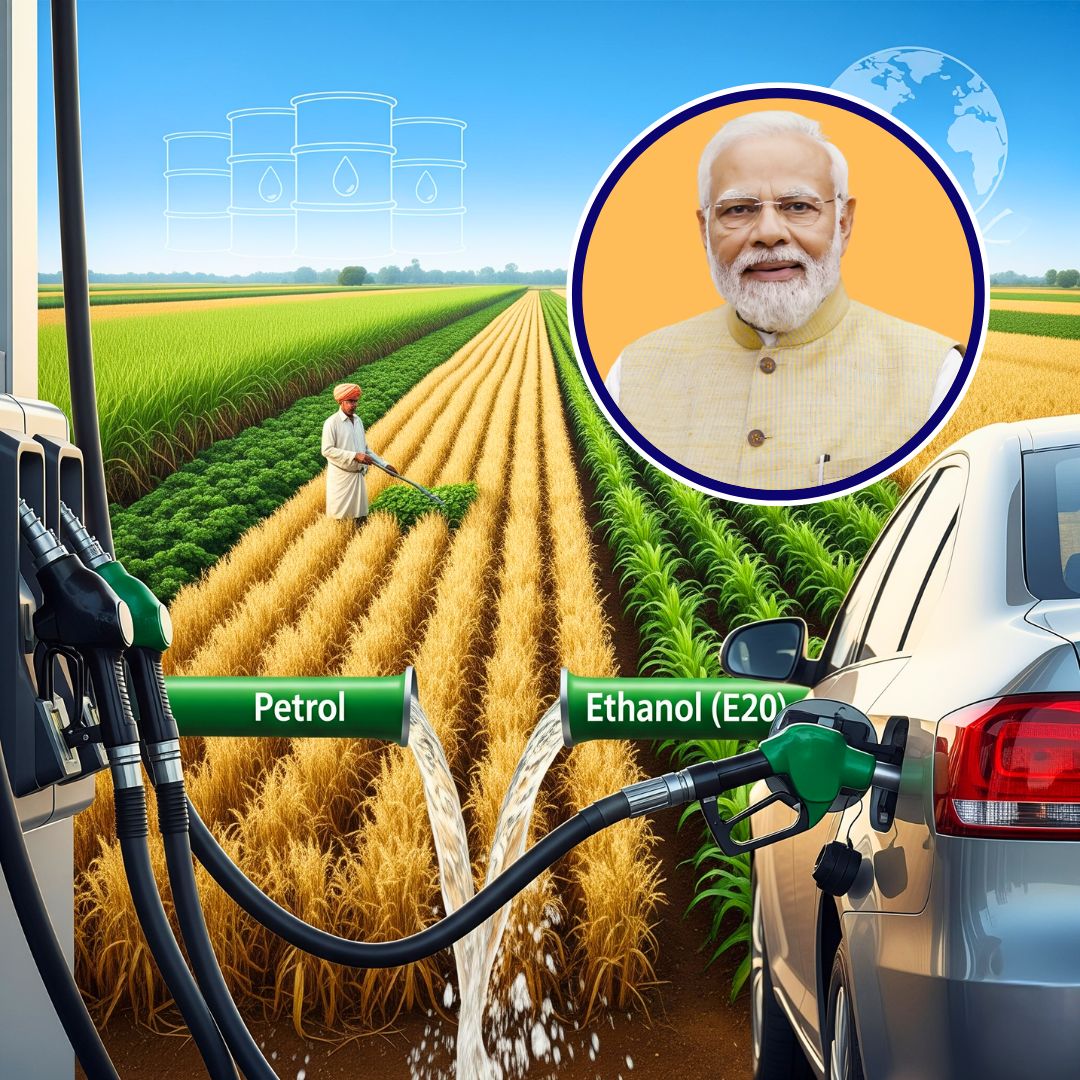India’s relationship with fuel is complicated. We are the world’s third-largest oil consumer, but we import most of what we burn– nearly 85% of our crude oil comes from abroad. That means our economy is at the mercy of international prices, geopolitics, and supply chains we do not control.
This dependence has long worried policymakers. In recent years, the search for alternatives has picked up pace: from solar power to electric mobility, from green hydrogen pilots to biofuels. Each is presented as a solution, but each comes with trade-offs.
One of the more ambitious of these is ethanol blending– the practice of mixing ethanol, a biofuel made from crops, with petrol.
What’s Happening on the Ground?
According to the Press Information Bureau, India’s ethanol blending rose from about 1.5% in 2013–14 to nearly 12% in 2022–23, with a target of 20% (E20) by 2025–26.
For the average driver, this means that the petrol at the pump is no longer just petrol. A fifth of it, within two years, could come from domestic agricultural sources.
Why Policymakers Back Ethanol
Ethanol blending appeals to policymakers for three main reasons:
- Energy security: Every litre of ethanol reduces oil imports. That saves foreign exchange and buffers us against global price swings.
- Farmers’ incomes: Ethanol is produced from sugarcane, maize, and surplus grains. In theory, this creates new demand and stable buyers for farmers.
- Environment: Ethanol burns cleaner than petrol, lowering carbon emissions at the tailpipe.
On paper, this looks like a win–win: less money spent abroad, more money to farmers, and cleaner air. But policies rarely play out as neatly as their PowerPoint slides.
The Doubts and Trade-offs
Mileage and performance: The most common consumer worry is mileage. Studies suggest E20 could reduce efficiency by estimated at 1–2% for four-wheelers designed for #E10 and calibrated for #E20, and slightly more in other ones. That’s not a huge drop, but in a country where every litre counts, it matters.
Engine wear and tear: Most new vehicles are being sold as “E20-ready.” Older vehicles may need minor part changes. Brazil’s experience shows ethanol blends can work– but India’s climate, driving patterns, and vehicle mix are not the same.
Environment vs. environment: Ethanol helps cut carbon emissions, which is good for the environment. But at the same time, it’s important to balance this with concerns about water use, land availability, and food security. The government is gradually shifting focus from sugarcane-based ethanol to alternatives like maize, broken rice, and surplus grains to reduce pressure on water and farmland.
Where Energy, Economy, and Environment Meet
Ethanol blending is not just about fuel. It is a snapshot of how India approaches its energy transition: ambitious targets, visible progress, but complex trade-offs.
It reflects our attempt to balance:
- global vulnerability (oil imports),
- local livelihoods (farmers),
- environmental urgency (climate change), and
- resource limits (water and land).
No single solution– not ethanol, not EVs, not hydrogen– will solve all of this. But each shows the tensions between growth, sustainability, and equity.
The Road Ahead
The government has capped blending at 20% till 2026. Beyond that, decisions will need broader consensus– with automakers, farmers, environmentalists, and consumers all at the table.
Globally, Brazil has shown ethanol blending can work at scale. India’s challenge is whether it can adapt that model without worsening its own structural problems: groundwater stress, smallholder farmer distress, and volatile food markets.
Why You Should Care
Ethanol blending is not a distant policy. It’s in the fuel you buy, the crops farmers grow, and the climate you live in. It won’t halve your fuel bill, nor will it single-handedly clean India’s air. But it tells us how the country is trying to navigate its toughest challenge: how to grow while importing less oil, supporting farmers, and facing a hotter, drier future.
Whether E20 becomes a stepping stone or a stumbling block depends less on chemistry and more on governance.











